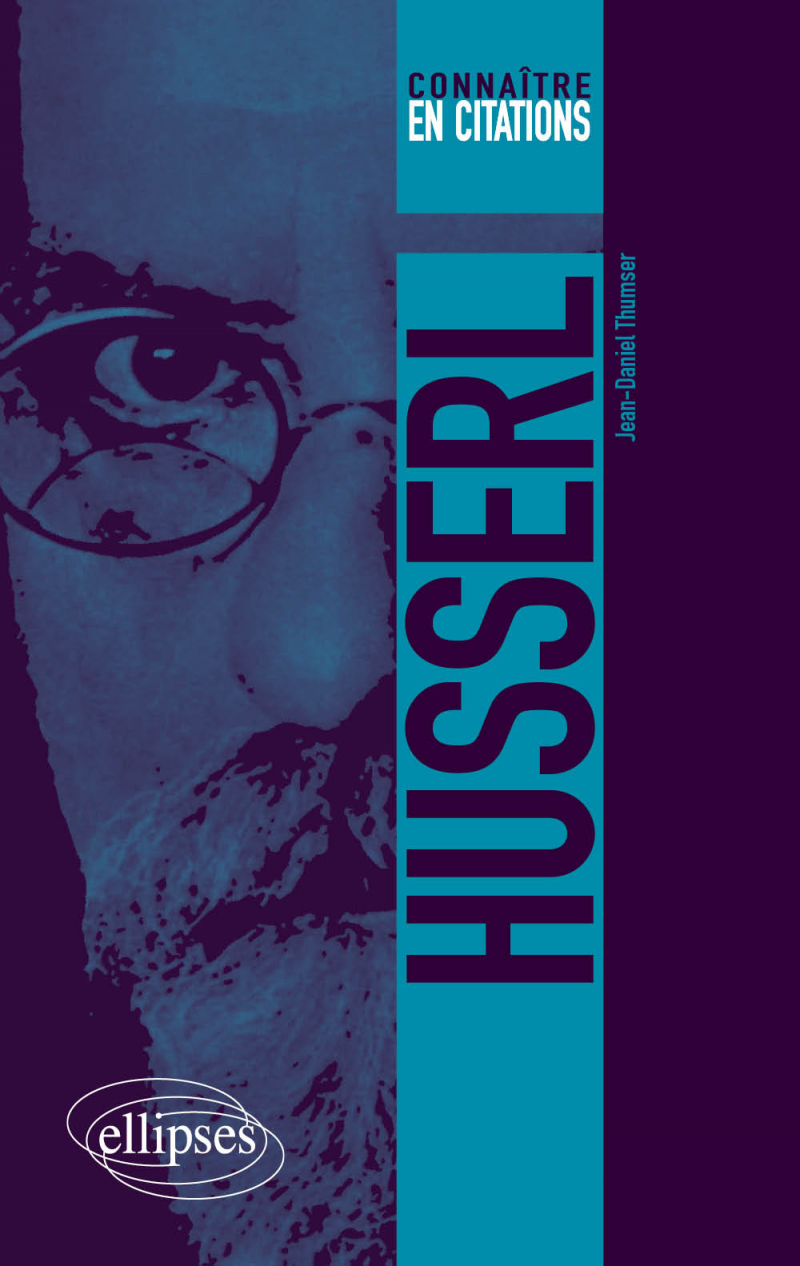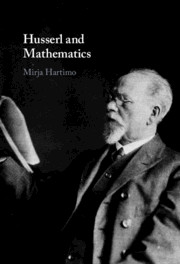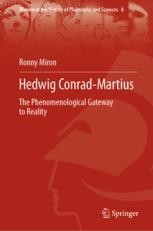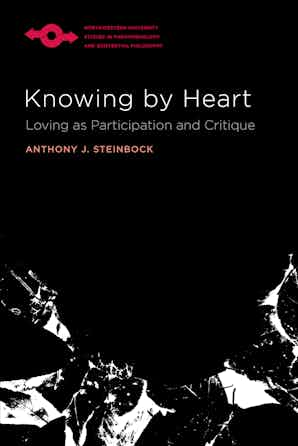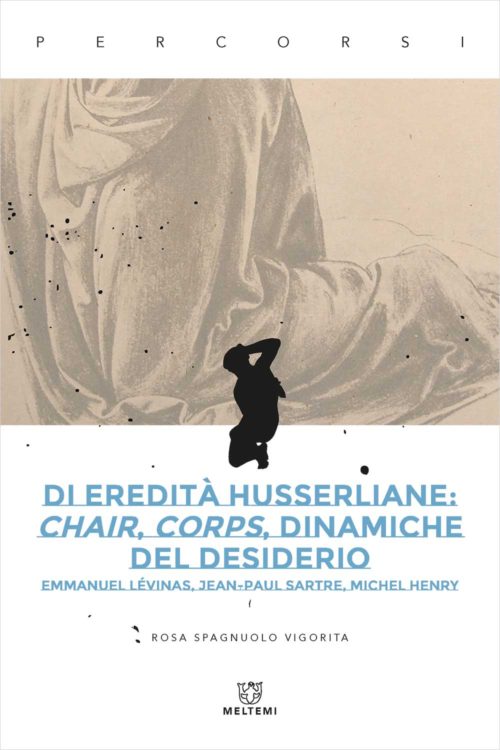 Groundwork of Phenomenological Marxism: Crisis, Body, World
Groundwork of Phenomenological Marxism: Crisis, Body, World
Continental Philosophy and the History of Thought
Lexington Books
2021
Hardback $155.00 • £119.00
Reviewed by: Talia Welsh (University of Tennessee Chattanooga)
Introduction
Ian Angus’ Groundwork of Phenomenological Marxism: Crisis, Body, World is not a light book, both literally and figuratively, at 537 pages of dense analysis of two of the most discussed thinkers in the last few hundred years. Not many contemporary works have tried to integrate Marxism and Husserlian phenomenology. While perhaps everything in the life of the mind is ultimately connected, the project laid out by Husserl and that by Marx seem to point in quite different directions with very different methodologies. Subsequent works by famous thinkers who were influenced by both, such as Jean-Paul Sartre, Maurice Merleau-Ponty, Herbert Marcuse, and Jan Patočka, did not seem to penetrate deeply into the scholarship of the side they are less famous for—that is, contemporary theorists of Marx do not go to Merleau-Ponty to discuss Marx, nor do phenomenologists routinely discuss Marcuse. Angus’ book truly does provide a groundwork to facilitate more work that does not neatly subsume the thoughts of one thinker under that of the other. While Angus notes his main textual supports will be Husserl’s Crisis and Marx’s Capital I, he also embraces a range of scholarship.
One generic challenge to phenomenology is that it struggles to critically engage with complex structures in our societies that exceed examination from the first-person perspective. Perhaps we are not just molded by our social, cultural, economic, and historical place in time, perhaps even what the idea of subjectivity is itself merely a momentary reverie and thus there is no ground from which to properly phenomenologize. A generic one to the Marx of Capital I-III is that the force of his understanding of capitalist logic creates a world in which things are happening with or without individual investment. We are all swept up in the force of history. Not only does the critic point out what Marx thought would come from capitalism has not transpired, but the idea of a self-enclosed system that will either end in ruin or revolution seems to ignore the manifold possibilities that have arisen, for better or worse, as capitalism spreads over the world. While both critiques can of course be argued against as misrepresntations, I bring up these challenges as a way to situate Angus’ impressive text as taking seriously both the analysis of capitalist logic as well as the importance of subjectivity. I read him as arguing that one can do a critical phenomenology in a capitalist world without reproducing bourgeois sentiment in a new form. In particular, his use of the idea of fecundity, ecological thinking, and Indigenous thought help explore places where capitalist logic fails to entirely dominate the lifeworld and places from which we might consider a robust contemporary phenomenological Marxism.
Overview of the Book
Part I: Phenomenology and the Crisis of Modern Reason & II: Objectivism and the Recovery of Subjectivity
In the first two chapters, Angus lays out the crisis of the modern sciences in order to set the ground for his later discussion of the lifeworld. The crisis of the sciences frames the entry into Husserl’s phenomenology and its relevance for the integration of Marx’s work. Husserl asserted that the crisis of the sciences is that they have become abstracted from their origin in human life, and thereby lost their meaning for humanity. The development of the modern sciences initiated the institution of the mathematization of nature. While mathematization of the modern sciences is not called into question as wrong, Angus notes that the issue becomes when the mathematization becomes “sedimented” and sciences assume “their validity has become an available tradition that further researchers use without investigating.” (43) Sciences thus use their symbolic systems, such as mathematization, as if it were full of human value even though it, by necessity, is abstract from human meaning. If we come to assume that only that which is objectively demonstrable by mathematization is “real,” then we are adrift in a world with reality devoid of meaning. The human world of intuition, tradition, sensuous nature, language, culture, and embodied experience cannot be mathematized. When objectivity found from abstract mathematization becomes “true” and subjectivity mere opinion, we find a crisis of reason. “This is the crisis: reasonproceeds without meaning for human life, while value loses its sustenance in reason.” (46) Angus says that the “healing power of phenomenology” is how phenomenology can uncover this historical sedimentation of mathematical reason and recover value.
Chapters three takes up the idea that one aspect of the crisis is the instrumentalization of the lifeworld. To begin, Angus uses Herbert Marcuse’s discussion of Husserl and deepens the manner in which the crisis of the sciences affects the lifeworld. Marcuse, like Husserl, is concerned with the manner in which instrumental reason cancels out the validity of subjective experience. What Angus draws out is how Marcuse draws attention toward the way in which the lifeworld becomes, under the reign of instrumentalism, merely a thing to be used by various techniques and technologies. It is natural to use technologies and associated technical practices to obtain ends; it is only when we have no other means to think of our lives that they become “emptied out.” “The emptying-out that treats a type as a formal ‘x’ removes the technical end from any relationship to other ends as experienced in the lifeworld and theorizes it strictly formally, that is to say, without any consideration if such an end is valid, good, or just.” (101) If human life is merely how we can as living objects use technologies and techniques to obtain certain pre-determined ends, say more money, more production, we merely become things. Moreover, we become things that cannot determine value ourselves since we are seen only as a means to a pre-determined end.
In chapter four, the discussion of technology is drawn into the 21st century. Angus considers how our contemporary digital technological culture is an extension of the instrumentalization of the lifeworld. While digital culture pervades our lives and determines the character of our self-understanding, we do not actually experience the digital itself. We receive information on our computers, tablets, and phone instantaneously (120). Here Angus develops briefly the idea about the importance of silence and delay which will be more developed in chapter nine. As digital culture transmits its information instantaneously, we have no space from which to take a pause from it given how quickly we are presented with new content. Yet, while the lack of any pause or delay can cover up the capacity for bracketing the digital, Angus states that “this absorption can never be complete” for the subject registers this information with a certain “intensity” or “valence” that is dependent upon other investments within the lifeworld (125). These other investments can produce a delay or lack of circularity of the system of digital culture and thus potentially ground a recovery of reason and value.
Chapters five develops further how value is both lost and potentially can be recovered and draws Marx into the picture to understand how abstract labor separates us from value. We do not encounter things in the lifeworld as value-free and then intellectually add value to them some x-value. Such a move would follow from the model that the instrumentalization of the lifeworld suggests. We have both social valuations that come from a determinate time and culture as well as subjectively personal valuations based on our own experience. Here Angus connects Marx and Husserl, reading both as concerned with the manner in which formal sign-systems are unable to address individual objects of value (139). In commodity fetishism, social relations are systematically concealed, similar to how in a “scientific” view of objectivity, one is unable to return to the value that grounds subjective experience. Moreover, because the system of exchange is hidden in object fetishism, self-knowledge is eluded. “This systematic absences of self-knowledge in social action is reproduced in an apologetic scientific form in political economy such that it produces a systematic lack in the social representation of value.” (143) Angus believes in the value of self-knowledge, but also importantly in the idea of a universalization that will permit escape from both a valueless scientific or economic system and from value being relative to particular cultures. In the fourth part of the book, this idea is sketched out more fully.
Part III: The Living Body and Ontology of Labor
Chapters six and seven productively develop stronger connections between the phenomenological project and the Marxist one. One the most developed discussions coming out of phenomenology’s approach to experience is developments that surround the consequences of understanding ourselves as first and foremost living bodies. We do not first consider the world consciously and then judge it, but are first born into a complex cultural, historical, and economic world and our embodied experiences with that world come to shape our judgements by sedimentation, not by conscious deliberation. Hence the lifeworld is not seen as “a” lifeworld, but simply what is, including the values and norms that our society has educated us in to see certain things as real or valuable when it might be just as conceivable that others things might be more deserving of value. The living-body is “the root-experience of the lifeworld” but we are always being with other beings; we are always part of a human, not just an individual, experience. (157) Angus separates out two features of our shared human experience: the positive “we-subjectivity,” the community in which we live, work, and commune with others, and the other and self as “objects” that either benefit or hinder any individual project (157).
Angus then turns toward Marx’s ontology of labor as the foundation of what it is to be human and what shapes human history. Certainly we need labor to live, but Marx argues that labor is also how we constitute our identity and the world in which we live (162). In Husserl’s work, the living body’s motility grounds subjectivity and Marx’s ontology of labor helps develop one way in which this subjectivity is formed. Angus agrees with Jan Patočka and Ludwig Landgrebe that early Marx’s view on labor lacked, unlike Husserl’s, a full account of subjectivity. However, as Angus will point out the Marx of Capital I presents us with a more complex view of labor. Here we see the sketch of much of the rest of the book—how an ontology of the lifeworld, in particular labor and its relationship to subjectivity, permits an understanding of the structures of that world. In order to connect the ontology of the lifeworld to a phenomenology of the living body, what Marx would call a critique, one must go beyond the “evident” nature of the lifeworld to question its current form and status.
Marx’s mature ideas of an ontology of labor as “a phenomenology of the role of human activity in nature” will shape much of the rest of the section’s discussion (180) While largely sympathetic with Marx’s focus on labor, Angus argues that Marx’s interest in technology as history determining cannot make sense without a better account of the surplus productivity of labor that allows such technology to form itself. I think it beyond the scope of this review to examine this critique—that is, is it really the case that Marx failed to understand the necessity of surplus productivity’s relation to nature?—but rather to take Angus at his word, and examine the interesting idea of fecundity that Angus will develop throughout the remainder of the text (187). The logic of capitalism of collecting commodities to be exchanged can appear to have circular and enclosed perspective. We work to produce things that can be sold to obtain money to buy or produce other things, ad infinitum. One can think here of Hannah Arendt’s dismissive view of labor as this endless need of human work to survive without the possibility of anything new coming from it, other than more survival and thus more labor. Angus writes that what actually happens, and what can be thought to perhaps undermine the capitalist project, is that labor exceeds what is needed to complete the next circuit—what is “the fecundity of nature.” (187) Here one is too reminded of Michel Foucault’s interesting ideas of how any regime of power/knowledge creates subjectivities that are not just docile, but also then have the means to creatively exceed that structure. Later Angus will develop the idea of fecundity to argue for an interesting ecological view of our current situation. Herbert Marcuse’s work helps underscore the emancipatory possibilities inherent in human activity outside its insertion merely into the logic of capitalism as labor. The event of any human activity is not subsumable entirely to the motivation that preceded it. One example is that the excess that labor can create produces not just things for survival, but culture as well. Culture then creates new forms of organization that exceed strict capitalist production.
Chapter eight is one of the densest chapters in the book. It takes up the idea of abstraction and its relevance for labor and value and concludes with how to revive value in the lifeworld. Abstraction in Marx’s theory is complex, there is the abstraction where individuals are only understood as significant insofar they play a role—say laborer or capitalist. Abstraction can also be where one analyzes the core features of capitalism and sets aside the actual concrete form. In this sense, abstraction comes close to a phenomenological reduction. Finally, there is abstraction in the sense of addition—“When we consider any only single factor, such as labor, there are a number of historical and imaginary, or logically possible, forms in which that labor could be organized: capitalist, trial, state, cooperative, etc.” (237) This groundwork lays the foundation for the most important abstraction in Marx’s text, to be later complemented by Angus’ formulation of abstract nature: abstract labor. Abstract labor is not illusory, it is real in the that is produced in the system of exchange of commodities. Workers, as individuals, are now just understood in abstraction as nothing but laborers qua commodities—things that can be bought. The commodity hides the relationship between humans, we do not encounter or know those whose products we purchase hence we tend to assume the value lies within the product—what is commodity fetishism. Laborers themselves becomes a thing as their labor-power is just another unit of exchange. Moreover, abstract labor operates as value—abstract labor has a certain value in the system of exchange and can be taken without consideration of the particular work the laborers are performing. As Husserl wrote about in the Crisis, one consequence of modern science has been the mistaking of the method of mathematization for actual truth and meaning. Marx’s understanding of the abstract labor likewise performs this move in a system of value (256). If only abstract labor is considered valuable, one has lost any footing the real world of humans, as individuals and also as communities in their culture and their history.
The lifeworld is able to recover reason as the place in which one can situate the historical nature of abstract labor and account for how its excess cannot be contained within capitalist reason. Excess productivity produces culture and also draws from the fecundity of nature which is never completely exhausted by capitalism. Nature, individuals, and communities produce excesses but given the particularities of the concrete spaces in which such productivity exists, there is no “unitary source” and thus they do not produce uniform products. Hence, “the proletariat has never acted as a unitary subject as Marxist politics has expected.” (277) Angus develops from this work on abstraction to an idea of abstract nature as critical to his phenomenological Marxism, pointing out that Marx, by not having a concept of abstract nature, is unable to explain just what abstract labor is to be performed upon. Briefly, Angus points toward ecology as a way exit the limitations of capitalist and modern scientific thinking and integrate nature and humanity. “The task of transformation would be to recover nature as the source of meaning and value, human labor as the giving of a specific form to that source.” (286) Ecology works from the connections between nature and cultures and can provide a method to get beyond our reductionistic thinking.
Technology is the theme of chapter nine which develops further the way in which the regime of capitalist value homogenizes production. While Marx and Marcuse’s views on technology are important to underline that there is no simple nature unchanged by humans nor humans apart from technical extension, it is Gilbert Simondon’s work permits us to consider our contemporary lifeworld more fully. Simondon is critical of Communist Party Marxism, arguing that the development of more technological societies with machines as central to production creates a particular kind of alienation where “both the worker and the industrial boss are alienated insofar as they are either above or below the machine.” (303) Hence, some Marxist views of technology as liberating are false. Angus draws our contemporary situation as another crisis because contemporary digital culture “approaches a pure transparency without delays or silences that could initiate emergent meaning” as discussed in chapter four (319). The speed of transmission of information and the lack of spaces in which to not be presented with such information reduces the capacity for the kind of productive excess that permits a possible exit from capitalist logic. One striking feature of our own society dominated by the capacity to share on the internet is how information is exploited much like physical labor. Cognitive capitalism is “neo-mercantilist” as a socio-economic form with the important element of “decay”—that is, the value of the digital form reduces over time (324). Thus, new digital products have a very short lifespan where they produce surplus profit and must be constantly produced by tech workers. As with his earlier discussion of technology, Angus argues that instead of transforming such digital spaces, “the struggles of the working class in such industries would not necessarily be to transform them as such, but to exist to become an independent, self-defining enterprise.” (324) Technology itself does not liberate workers if they do not have the means to define its value.
Chapter ten lays the groundwork for the recovery of the concrete grounds from which to critique the mathematization of science and the abstractions of capitalism. Husserl himself celebrated biology in its connection to the living body as a means to connect the lifeworld in experience and the sciences of life. However, Angus points out that, as Marx shows us, bodies can be abstracted in labor and creates a closed system of understanding bodies that does not permit a true phenomenological investigation. Angus’ idea of abstract nature is added to this critique in order to point out that it is not just labor, and thus humans, that are abstracted in capitalism, but nature as well. Angus writes, “abstract nature if the fundamental critical category of our phenomenological Marxism that can be counterposed to the discovery of natural fecundity as an excess that underlines all human productivity and culture.” (345) Again, Angus draws attention to ecology as a way of thinking since it considers the connections between life-forms and the worlds in which they live, something biology does not do. This is a concrete starting place instead of the abstraction required by the sciences or capitalism and can think of communities instead of only abstract systems.
Part IV: Transcendentality and the Constitution of Worlds
Chapter eleven and twelve deepen Angus’ ideas of the phenomenological project and the need for an intercultural self-responsible phenomenology. Emphasizing the intersubjective nature of any lifeworld and the plurality of them helps underline how the need for the phenomenological view to complement Marx’s work. In Marxist thought, there is the tendency to see subjectivity as rather uniform amongst classes. Angus takes up the question if Husserl’s commitment to seeing Europe as central makes phenomenology not just Eurocentric, which I would think is hard to deny, but also fundamentally invested in an implicit view of European superiority. Angus develops a fascinating perspective on America, here understood as the Americas, rather than simply the United States, as the kind of example that makes any kind of European view limited. America is not a repetition of Europe; America is shaped by the “conquest-disaster” of its origins as well as by the Indigenous traditions and thoughts that also continue to shape it. The conquest-disaster begins “an ongoing institution that remains with us to this day and points toward some sort of resolution of final goal (Endstiftung). We live within this institution and its assigns us a task.” (399) The task is to see this lifeworld as it is, not as Europe’s, but with its own shape and demands. Angus argues this broader view of the historical nature of cultures helps expose the need to respond not just to the scientific and economic crises, but also to our “planetary crisis.”
This planetary crisis refers to the reason understood as technology that is based on formal-mathematical science as the origination of crisis and phenomenological reason as the renewal of meaning and value through a recovery of relation to the lifeworld. Meaning and value must be generated, not simply from looking back to prior institutions, but from events constituted by the planetary encounter of culture-civilizations that motivate an appeal upward on step toward great universality. (403)
What is needed is intercultural-civilizational understanding that moves toward universality. This might seem a bit strange, after all typically calling for greater intercultural understanding can be seen to call for something particular and non-universal. Angus develops not a particular kind of universality, say something like “Europe,” that should be taken as the goal, but rather a certain kind of community living together. While we live in a world saturated by calls for cultural understanding, one might rightly see them as a kind of buffet model—a little of this one and a little of that. This can be seen as how scientific-technological civilization renders all traditions as local and particular to the universality of its enterprises, so culture becomes like a disposable addition upon “real” understanding which is of course that which can be reduced to either scientific models or capitalist logic. This can also be seen as expressed, in a much different fashion, in relativist philosophies where one can affirm the other, but is left in without any means of overcoming differences. Angus takes up an approach where what the phenomenological tradition can guide for intercultural understanding is by pursuing not a “truth” that then can add various cultural views, like clothing, nor a set of discrete truths which cannot communicate, but a center-periphery logic where different assumptions in culture-civilizations can be upended by each other in discourse and attention to practices. Angus looks to build:
A philosophy that would be ecological, in the sense that it would focus on the concrete relations that construct a Whole; that would be Marxist, in the sense that is would criticize a social representation of value that relies on commodity price; and that would be phenomenological, in that it would ground value in the lifeworld in action and intuition, is a possibility that would enact this hope. (441)
Chapter thirteen spells out just what intercultural-civilization phenomenology could be. By using place-based knowledge, such as Indigenous thought, we can displace the tendency of planetary technology and capitalism to homogenize by abstracting individuals and nature. Like ecological thinking, Indigenous thinking starts from relationships and from thinking from community instead of thinking of individuals first. Yet of course, any community might not be compatible with another, so in order to move from the value of community to the kind of universal investment needed to combat the crises of our age, Angus appeals in chapter fourteen to Charles Taylor’s notion that “each cultural group can find its own reasons for belonging in a higher unity, that the reasons do not have to be identical for each group.” (453). Hence, the intercultural dialogue would consider crises that face us all, but not require that each group form a new identity but rather that each group understand their share and investment in the problem. The final chapter of part IV considers how philosophy can work to restore the fecundity of nature, of human labor, and of community investment. Natural fecundity is found not “outside” human experience in the environment as a thing, but rather within a cultural heritage’s manner in which it takes up freedom. Indigenous thought and ecological thinking help show ways in which cultural heritage and cultural understanding are not limitations to “proper” science or economic systems, but important ways in which to understand relationships and value.
Part V: Self-Responsibility as Teleologically Given in Transcendental Phenomenology
The final section of the book develops the idea that philosophy in the manner outlined above cannot be first and foremost about rule-following. After all, if we are to take seriously intercultural dialogues and the heritage of communities, we cannot find a common set of ethical rules that must guide them all. Moreover, any lifeworld unexamined appears to us “how it is” and thus its “rules” are unexamined as they seem natural. The separation of meaning and value caused by the mathematization- mechanization of the world by the modern sciences and the forced abstraction of humans from their bodies and nature in capitalism requires both an analysis of its origins as well as a responsible call to action to try and guide a method for the renewal of meaning and value. Angus appeals to the idea of responsibility as a method of living by inquiring. “Self-responsibility is the ethic of philosophical inquiry and its practice in confronting the rule-following inherent in lifeworld practices.” (489) This is both a responsibility toward humanity and to the individual. Angus finds that Husserl remains too embedded in the tradition of knowledge “for its own sake” and thus remains unable to articulate a call to action. Instead, learning should be drawn into the strife of the world “with eyes wide open” and to search for justice. (499)
Conclusion
In the preface to the French edition of Capital I, Marx chides the “French public” who are “always impatient to come to a conclusion” that they might not wish to labor through the early chapters. However, he writes “There is no royal road to science, and only those who do not dread the fatiguing climb of its steep paths have a chance of gaining its luminous summits.”[1] While I have nothing to say about if this characterization of the French public of 1872 is deserved, I do want to qualify my comments below as that perhaps they are testimony more to my challenges with the book’s steepness than the text itself. No book can serve all possible audiences, but I did wish the book were more readable for someone who was versed in one or the other tradition and curious about the possible connections. As it is, I would find it quite challenging for someone to read who didn’t already have a good command of Husserl’s phenomenology and at least an understanding of the critique of capitalism in Marxist thought. While Angus does provide an extremely detailed discussion of the main points he wants to draw from each, and thus this could act as a kind of summary, he does not explain for the reader the general frame in which to understand these very detailed summaries. This is particularly so for the phenomenological discussions. I cannot see someone who was well-read in Marxist thought making much sense of the phenomenological project herein since the discussion assumes a certain understanding of phenomenology’s language. I could imagine a reader unfamiliar with Marxist thought, but familiar with phenomenology understanding better the discussion of abstract labor and nature, so central to the book, since capitalism so defines our current reality and even someone who has not read Marx would be familiar with the idea that there might be problems with capitalism.
I wonder if the book began not with Husserl’s thought, but instead with a shorter discussion of ecology that appears very late in the text. This would provide a kind of framework and directionality to the text in which to work through the crises of science and labor. While the ultimate longer analysis of ecology rightly should follow his analysis at the end of the book, any reader would be familiar with our current environmental crisis and could help understand that this book would help elucidate this crisis and provide some ideas for action. In addition, more framing of phenomenology’s method might aid in reaching a wider audience. I also wondered at the conclusion, so exclusively considered with phenomenology where it would have seemed to my mind obvious here to appeal to the call to action in Marxist thought. In the discussion of communities, one could also think not just of communities qua historical cultures, but also communities such as labor unions, political groups, and religious groups.
However, this is a “groundwork” not an introduction to phenomenological Marxism and as such perhaps it is a text that is rightly directed toward an audience who can follow its density and read further as need be. It is a welcome addition to our intellectual life and provides an important way in which to address the manifold contemporary crises our world faces. In particular, Angus presents a compelling model wherein we engage with Indigenous and community-based thinking not to simply affirm the “otherness” of this thought, but to see it as an important interlocutor with European phenomenology and Marxism. The crises we face are not culturally located, but planetary, and as such require a universalizing, but not totalizing, response.
[1] Karl Marx. 1976. Capital Volume I, 105. London: Penguin.
